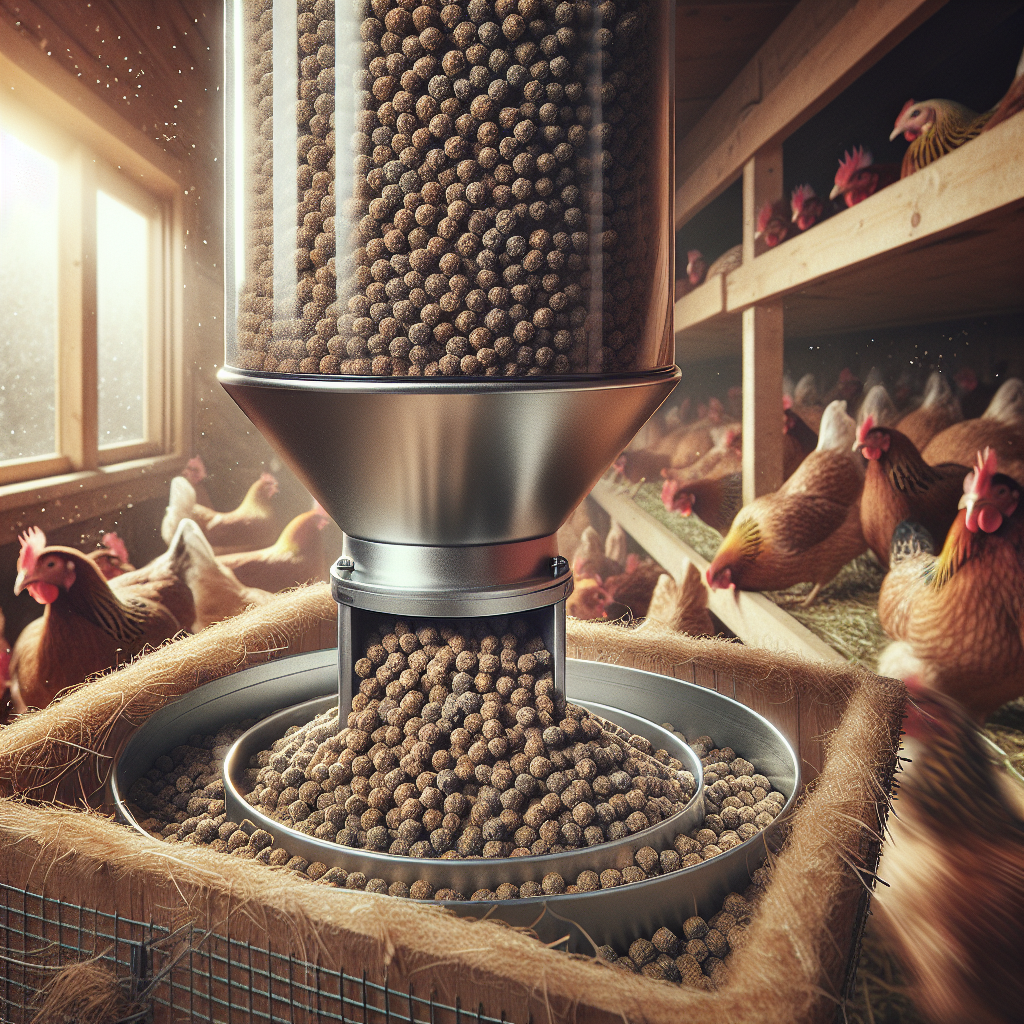When it comes to designing a chicken coop, there are key components that play a crucial role in creating a safe and comfortable environment for your feathered friends. From sturdy construction to proper ventilation and security measures, each element serves a specific purpose in ensuring the well-being of your flock. In this article, we will explore the essential components that should be considered when designing an effective chicken coop, providing you with valuable insights to create a functional and inviting space for your chickens. Whether you are a seasoned chicken keeper or a beginner, these guidelines will help you create a coop that meets all the needs of your feathery companions.
Size and Space
Determining the appropriate size of the coop
When designing a chicken coop, it is crucial to consider the appropriate size for your flock. Each chicken should have enough space to move around comfortably and engage in natural behaviors. A general rule of thumb is to allow at least 4 square feet of space per chicken in the coop. This ensures that they have sufficient room to roost, nest, and scratch the ground without feeling cramped. However, it’s always better to provide a little more space if possible to prevent overcrowding and potential behavioral issues.
Calculating the space required per chicken
To calculate the total space required for your chicken coop, you need to know the number of chickens you plan to have. Multiply the number of chickens by the recommended 4 square feet per chicken. For example, if you have 10 chickens, your coop should have a minimum of 40 square feet of space (10 x 4 = 40). It’s important to note that this calculation is for the coop space only and does not include any outdoor runs or free-range areas that your chickens may have access to.
Coop Location
Choosing the right location for the chicken coop
The location of your chicken coop is a critical factor in ensuring the health and safety of your chickens. Choose an area that is well-drained and away from any low-lying or damp areas. Make sure that the coop is elevated or situated in a way that prevents water from pooling inside during heavy rain or snow. Additionally, select a spot with adequate sunlight exposure to promote natural lighting and warmth.
Considering accessibility and security
When selecting the location for your chicken coop, consider accessibility and security. Choose a spot that is easily accessible for daily chores such as feeding, cleaning, and collecting eggs. It should also be convenient for bringing in supplies and equipment. In terms of security, ensure that the coop is not easily accessible to predators. Avoid placing it near dense shrubs or bushes that could provide hiding spots for predators. Additionally, consider installing a fence or using hardware cloth to reinforce the coop and prevent unauthorized entry.
Ventilation
Ensuring proper airflow within the coop
Ventilation is crucial for maintaining a healthy environment in the chicken coop. Proper airflow helps prevent the buildup of ammonia from chicken droppings, controls humidity levels, and removes stale air. To ensure adequate ventilation, you should have openings for fresh air to enter and stale air to exit. This can be achieved by incorporating windows, vents, or other openings in the coop design.
Using windows, vents, and fans for ventilation
Windows are an excellent source of natural ventilation and should be positioned strategically to allow for cross-ventilation. Placing windows on opposite walls helps create a natural airflow as fresh air enters through one window while stale air exits through the other. Vents or vents fans, especially near the roofline, can further enhance airflow and remove hot air during summer months. Alternatively, consider using fans to circulate air if natural ventilation alone is not sufficient. Just make sure that the fans are positioned safely and away from the reach of chickens.
Insulation
Insulating the coop for temperature regulation
Proper insulation is essential for maintaining a comfortable temperature inside the chicken coop, especially during extreme weather conditions. Insulation helps keep the coop warm in winter and cool in summer by preventing excessive heat loss or gain. This not only promotes the overall well-being of the chickens but also reduces energy costs associated with heating or cooling.
Choosing suitable insulation materials
When selecting insulation materials, it’s important to choose ones that are safe for chickens and resistant to moisture and pests. Common insulation materials suitable for chicken coops include foam boards, fiberglass batts, and reflective insulation. Ensure that the insulation is properly installed, covering all walls and the ceiling. Be mindful of any gaps or exposed insulation that could be hazardous to the chickens.
Lighting
Providing adequate lighting for the chickens
Lighting plays a crucial role in the health and productivity of chickens. It helps regulate their natural circadian rhythm, encourages egg production, and reduces behavioral issues. A good chicken coop design should ensure that chickens have access to both natural and artificial lighting sources.
Using natural and artificial lighting sources
Natural lighting is beneficial for the overall well-being of chickens. A well-placed window or two can provide natural sunlight and fresh air, promoting a sense of well-being and allowing them to distinguish day from night. Additionally, consider installing artificial lighting fixtures to supplement natural light during darker months or in locations with limited sunlight. Provide a consistent and appropriate amount of light to ensure proper egg production and prevent stress.
Flooring
Selecting appropriate flooring material for easy cleaning
Choosing the right flooring material for your chicken coop is crucial for ease of cleaning and maintaining a healthy environment. The floor should be durable, easy to clean, and resistant to moisture and pests. Common flooring options for chicken coops include concrete, gravel, and dirt.
Providing proper drainage in the coop
Regardless of the flooring material chosen, it is essential to ensure proper drainage in the coop. This prevents water from accumulating and causing unsanitary conditions. Incorporate a slight slope in the flooring to allow for water runoff and consider adding a layer of bedding material to absorb moisture and provide a comfortable surface for the chickens.
Nesting Boxes
Designing and positioning comfortable nesting boxes
Nesting boxes are essential components of a chicken coop design, providing a safe and comfortable place for hens to lay their eggs. These boxes should be designed with the hens’ size and comfort in mind. They should be spacious, well-ventilated, and filled with clean bedding material to encourage egg-laying.
Ensuring easy access for egg collection
When positioning the nesting boxes, make sure they are easily accessible for collecting eggs. Locate them at a convenient height, preferably near the coop entrance, for quick and effortless access. Regularly clean and replace the nesting materials to maintain a clean and hygienic environment for egg-laying.
Perches
Including perches for the chickens to rest and sleep
Perches are essential for chickens to rest, sleep, and feel secure. They mimic natural roosting spots and provide chickens with a sense of safety. Including perches in the coop design ensures that your chickens can engage in their natural behavior and get adequate rest.
Determining suitable perch size and height
When selecting perches, consider the size and strength of your chickens. Perches should be wide enough for chickens to grip comfortably with their feet. A 2-inch diameter perch is usually suitable for most chickens. Additionally, determine the appropriate height for the perches. A height of around 18 inches from the ground is recommended, providing enough space for chickens to move around comfortably beneath the perches.
Security
Implementing measures to protect the coop from predators
Ensuring the safety of your chickens is paramount. Implementing security measures in your coop design is crucial to keep predators at bay and protect your flock. Use sturdy materials for construction and reinforce vulnerable areas that may be susceptible to break-ins.
Using sturdy materials and locks for doors and windows
Choose strong and durable materials when building the chicken coop. Reinforce the walls, doors, and windows to prevent predators from gaining access. Install sturdy locks or latches on doors and windows to ensure they stay securely closed. Regularly inspect the coop for any signs of weakness or potential breaches, and promptly address them to maintain a secure environment.
Feeding and Watering System
Designing an efficient feeding system
An effective chicken coop design should incorporate a well-designed feeding system. This ensures that the chickens have easy access to nourishing food and minimizes feed wastage. Install feeding troughs or containers that allow simultaneous feeding for multiple chickens. Consider utilizing gravity or automated feeding systems for convenience, especially if you have a large flock.
Providing clean and accessible water sources
Clean and accessible water is essential for the health and well-being of chickens. Incorporate waterers that are easy to refill and clean. Ensure that the water source is protected from contaminants and positioned at an appropriate height to prevent chickens from soiling it. Regularly check and clean the waterers to prevent bacterial growth and keep the water fresh and sanitary.
In conclusion, designing an effective chicken coop requires careful consideration of various components such as size and space, location, ventilation, insulation, lighting, flooring, nesting boxes, perches, security, and feeding and watering systems. By taking into account these essential components and following best practices, you can create a comfortable, safe, and productive environment for your flock of chickens. Remember to regularly assess and maintain the coop to ensure the continued health and well-being of your feathered friends.




